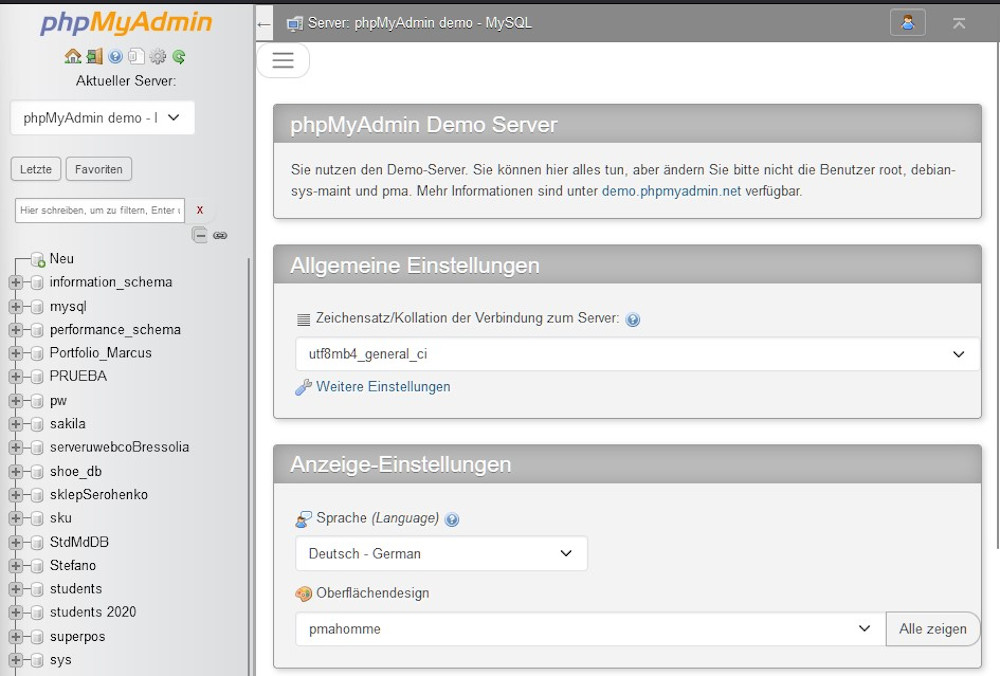
The WordPress database is the heart of a WordPress website and stores all content. Therefore, the connection between WordPress and the database is established directly during installation. In this article, we will inform you about the most important tips on administration, data security, optimization and performance!
Requirements for WordPress & a WordPress database
To run a WordPress website, you need a web hosting plan with sufficient web space and access to a database. Therefore, a database is included in special WordPress web hosting offers . Web space and database are usually stored on the same server and the connection is made during installation by entering the database name and password.
Note : Depending on the hosting plan you choose, you may need to create the database yourself before installing WordPress, or the hosting provider may do the task for you and provide you with the login information.
WordPress typically uses the MySQL database management system. This is an established and mature open source software. An alternative is MariaDB with similar functionality and syntax.
The functions of a WordPress database
Apart from WordPress and plugin files and media, WordPress stores all other website information in the database. This includes post and page content, revisions, meta information, and plugin settings, among others.
Every time someone visits the website, WordPress loads the content from the database and sends it to the browser. If, for example, a visitor to the website registers, the user data is stored in encrypted form in the database. When a user logs in, the login data is then compared with the entry in the database.

10% discount on all DF products
Database access with phpMyAdmin

The image shows the user interface of the phpMyAdmin tool, which you can use to view and edit the contents of a MySQL database.
The database content is divided into tables with columns and fields. The content is accessed using a tool such as phpMyAdmin. There is a demo version on the provider’s website so that you can try out the functions . However, changes to entries directly in the tool should be made with great caution, as incorrect entries can have serious consequences for the functionality of the website. Viewing, editing and updating content is done using SQL commands. If you are interested, you can learn more about the basics of MySQL and SQL fundamentals .
Note for web developers : When writing WordPress code, direct SQL queries are not recommended. Instead, you should use the WPDB class for interactions with the database. The global object $wpdb is provided for this purpose, and the wpdb class is located in the wp-includes/wp-db.php folder. You can find more information about the wpdb class on the official website .
Overview of the standard tables of a WordPress database
A WordPress database uses a prefix for table names, usually “_wp”. The table names therefore begin with the prefix, followed by the actual name. The important standard tables include the following:
- wp_options stores important website settings.
- wp_users stores the user data including the permissions.
- wp_posts contains information about posts and pages as well as media.
- wp_terms saves the created categories.
- wp_terms_relationships contains the links between categories and posts.
WordPress Database Tips: Backups and Optimizations
Since database problems often result in a website being partially or completely unavailable, regular backups are essential.
create backups
Professional hosting providers such as DomainFactory create daily database backups for security reasons. You can also back up the data yourself with just a few clicks, for example with the popular plug-in
UpdraftPlus . You should not save the backup on the server, but locally on your computer and in the cloud.
Optimize WordPress database for faster loading times
Over time, the database grows and can contain thousands of entries, many of which may be out of date. This slows down the loading time of a WordPress website. For example, WordPress saves a post revision in the database every time a post is changed. This quickly creates hundreds or thousands of revisions, unnecessarily bloating the database. In addition to out of date revisions, unnecessary information includes SPAM comments, transients and information about plugins that are no longer used.
Extensions such as WP-Optimize or WP Rocket are useful for cleaning up a WordPress database . Both also offer many other options for improving page loading speed. Remember to always create a backup before making any changes to the database!
Tip : You can limit the number of revisions saved to avoid unnecessary database bloat. You can add the line ” define(‘WP_POST_REVISIONS’,5); ” to the wp-config.php file to limit the number per post to five – or enter a different number.
Enable caching for fewer database accesses
Website caching reduces database accesses and thus improves page loading speed. The extensions WP-Optimize and WP Rocket also integrate caching methods. Other plugins include
LiteSpeed Cache and
W3 Total Cache .
Managing WordPress Database – Conclusion
With the tips mentioned, you can edit, clean up, optimize and secure your WordPress database. Implement the recommendations so that your website loads as quickly as possible and doesn’t carry any ballast around with it.
Cover image: Image by FreePhotosART on Pixabay
